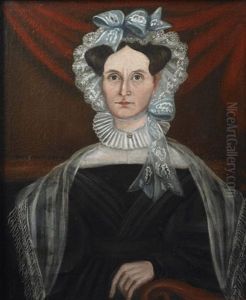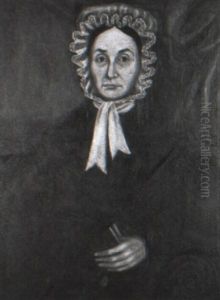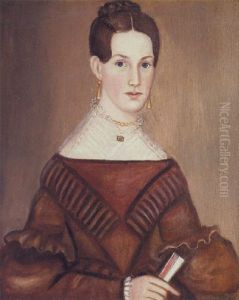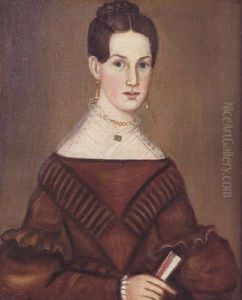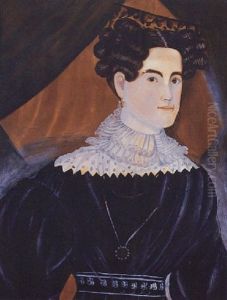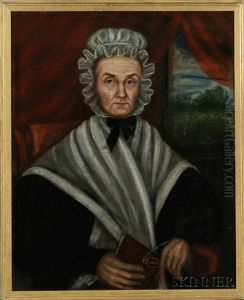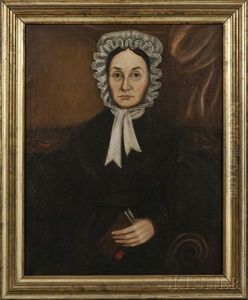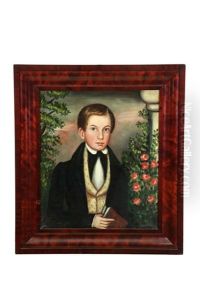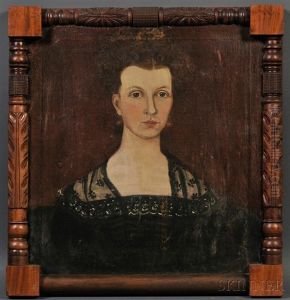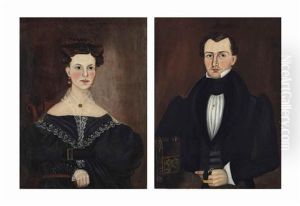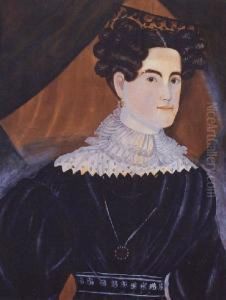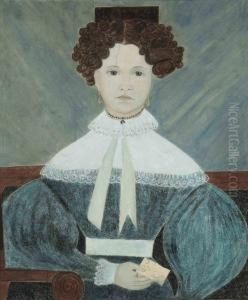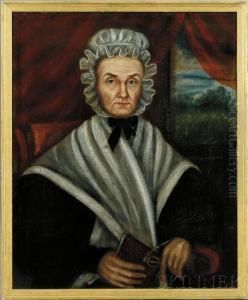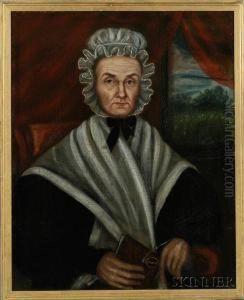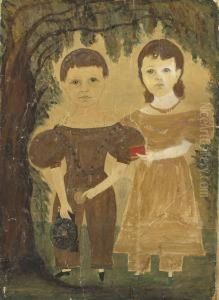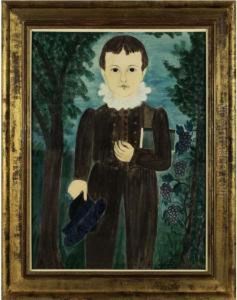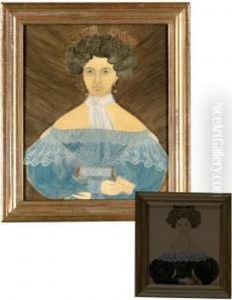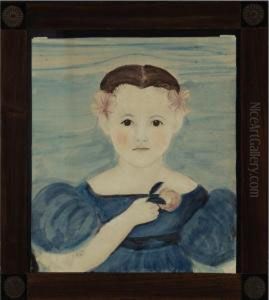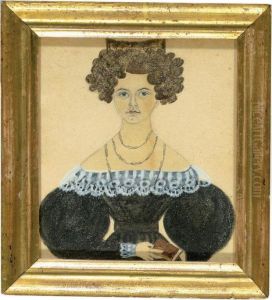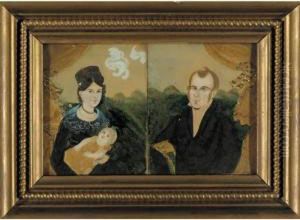Ruth Whittier Shute Paintings
Ruth Whittier Shute was an American folk artist, born in 1803 in Dover, New Hampshire. She was part of a unique niche in American art history, known for her itinerant work alongside her husband, Dr. Samuel A. Shute. Together, they traveled across the New England region, where Dr. Shute worked as a physician while Ruth captured the likenesses of their patrons through her portraiture.
Ruth Whittier married Samuel A. Shute in 1827, and their partnership was not only marital but also professional. While it was common for itinerant artists of the time to travel alone or with peers, the Shutes' collaboration was notable for combining medical services with artistic endeavors. Ruth's work primarily consisted of portraits, which were characterized by their vibrant colors, attention to detail, and a certain naïveté that has endeared them to collectors and historians alike.
Despite the popularity of photography beginning to rise during their active years, the Shutes' portraits remained in demand, perhaps because of the personal touch and the status symbol that commissioned portraits represented at the time. Ruth's artistic style was self-taught, which was typical for folk artists of her era. Her works provide a fascinating insight into the fashion, interior design, and social status of her subjects, reflecting the cultural and societal norms of 19th-century America.
After years of traveling and creating art, Ruth Whittier Shute passed away in 1882. Her contributions to American folk art have been recognized posthumously, with her works being included in the collections of prestigious institutions such as the American Folk Art Museum. Ruth Whittier Shute's legacy endures as a testament to the rich tradition of itinerant artistry and the unique perspective of women artists in the 19th century.
